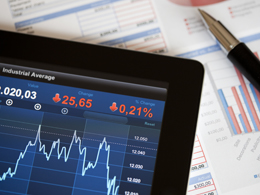 Over the past month, we saw a market recovery that seemed like it would lead to new highs, a pullback on Greece and China, another recovery, then another pullback, and then a bounce up followed by another pullback on the Chinese devaluation.
Over the past month, we saw a market recovery that seemed like it would lead to new highs, a pullback on Greece and China, another recovery, then another pullback, and then a bounce up followed by another pullback on the Chinese devaluation.
What’s going on here?
Yesterday was particularly interesting, with the S&P 500 dropping right through its 200-day moving average, the point where I start to get concerned. There was a real chance the market might be breaking down, that the news from China was triggering a reassessment. Then, in the afternoon, it bounced back up. Never mind.
Investors remain confident
What’s driving this market action? Almost every market pullback we’ve seen recently has been due to an identifiable event, usually outside the U.S., that prompted a rational reassessment of growth and a corresponding repricing of the market. There’s been no panic and very little contagion. In other words, there’s no sign that investors in general are losing confidence, just adjusting their expectations.
This is important, because it’s a loss of confidence that can reverse trends. Right now, the market remains in an uptrend based on confidence that the economy and earnings will continue to improve.
U.S. fundamentals on solid ground
Here in the U.S., continuing employment growth has been validated by strong business surveys, particularly the recent ISM Non-Manufacturing Index. Retail sales came in strong this morning, as expected, with substantial upward revisions for previous months. The economic recovery continues.
Earnings are doing better than anticipated as well, down 1 percent at the end of last week and defying expectations for a 4.6-percent decline. Even this result is misleading, however, as seven of ten sectors showed increases. And, if we exclude the energy sector, earnings grew by 5.7 percent, according to FactSet. This is a very positive result overall.
But we should be prepared for external shocks
With U.S. economic fundamentals continuing to flash green, it looks like any confidence-destroying shock would have to come from outside. Given recent events, from the rerun of the 2011 Greek crisis, the Chinese stock market crash, and now the Chinese yuan devaluation and growing concern about China's economy, it’s hard to imagine what else could happen.
There are reasons to worry, of course, with the Fed’s pending rate increase at the head of the list. Markets typically bounce around when rates start to rise, but that’s usually a short-term problem rather than a long-term one. The Chinese economy could also continue to surprise on the downside, and other emerging markets are facing substantial challenges. Volatility is very likely to continue.
The bottom line, though, is that U.S. market and economic fundamentals remain reasonably steady. It would take a fairly major event to shake investor confidence enough to change that. I'll continue to watch the market, and to worry, but at the moment, it appears that these solid foundations will limit any damage.


 Print
Print


